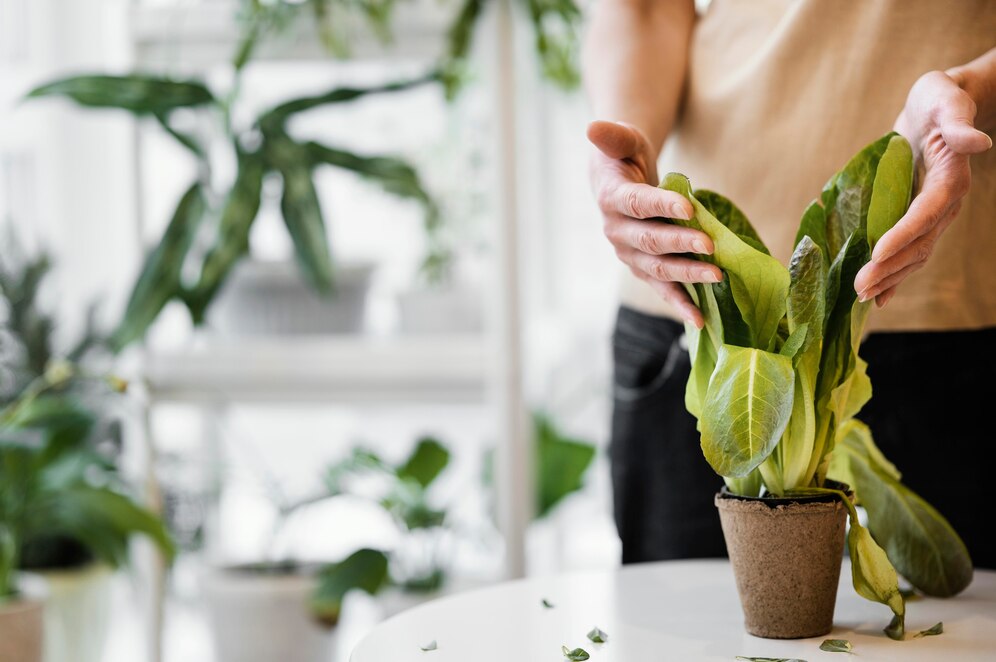
In recent years, the Philippines has witnessed a delightful trend with the surge of “plantitos” and “plantitas.” Filipinos have embraced a newfound love for nurturing a green paradise within their homes. This surge in popularity can be attributed to several factors.
Firstly, plants act as natural air purifiers, effectively filtering out toxins and pollutants, leaving us with a breath of fresh air indoors.
Secondly, studies have shown that caring for plants can significantly boost mental well-being. The act of nurturing life, witnessing growth, and being surrounded by greenery has a calming and therapeutic effect, reducing stress and anxiety. Finally, plants add a touch of undeniable beauty to our living spaces.
A strategically placed Monstera Deliciosa with its split-leaf fronds can instantly add a touch of the tropics to a living room, while a cascading pothos on a bookshelf injects a burst of life. From delicate orchids to vibrant succulents, plants offer many options to personalize and enhance any indoor or outdoor space.
However, the arrival of the beloved rainy season in the Philippines, while a welcome respite from the scorching heat, can pose a challenge for even the most dedicated plant parent. The increased rainfall and humidity can lead to several issues, requiring adjustments to our usual plant care routines.
With the arrival of the monsoon season, the much-anticipated relief from the scorching Philippine heat comes with a hidden downside for our beloved plants. The deluge of rain can lead to a nightmarish scenario for even the most dedicated plantito or plantita.
Excess water can saturate the soil, suffocating plant roots and inviting rot. Poor drainage, exacerbated by the downpours, further compounds the problem. Additionally, reducing sunlight hours due to increased cloud cover can disrupt photosynthesis, hindering plant growth.
But do not worry we have listed these essential tips and strategies, you can transform the rainy season from a threat to an opportunity for your plants to survive and even thrive during the wet months.
Plant Care Tips During Rainy Season

Protecting Vulnerable Plants
Delicate plants with soft leaves or shallow root systems can suffer from strong winds and heavy rain. Bring them indoors to a sheltered location or create a temporary haven using shade cloth. This will protect them from the harshest elements while allowing them to receive filtered sunlight and rainwater.
Ensuring Proper Drainage
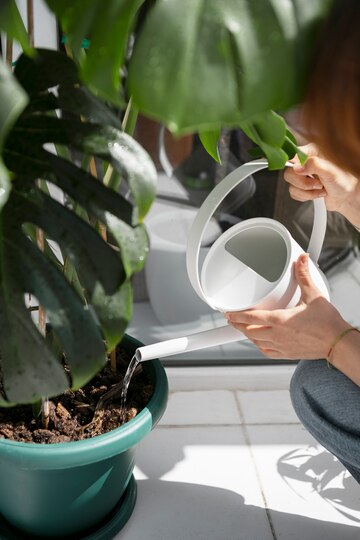
Proper drainage is crucial for preventing waterlogging, which can suffocate plant roots and lead to rot. Ensure your potted plants have drainage holes at the bottom, and avoid placing them in decorative saucers that trap water. Elevate pots on bricks or stands to improve drainage further. Use a well-draining potting mix that allows excess water to flow freely.
Managing Excess Water
Consider creating raised beds or building trenches for outdoor plants in garden beds to channel excess water away from the roots. This will prevent the soil from becoming saturated and harming your plants. In the case of potted plants, ensure drainage holes are clear and avoid overwatering, especially during periods of heavy rain.
Soil Erosion Prevention
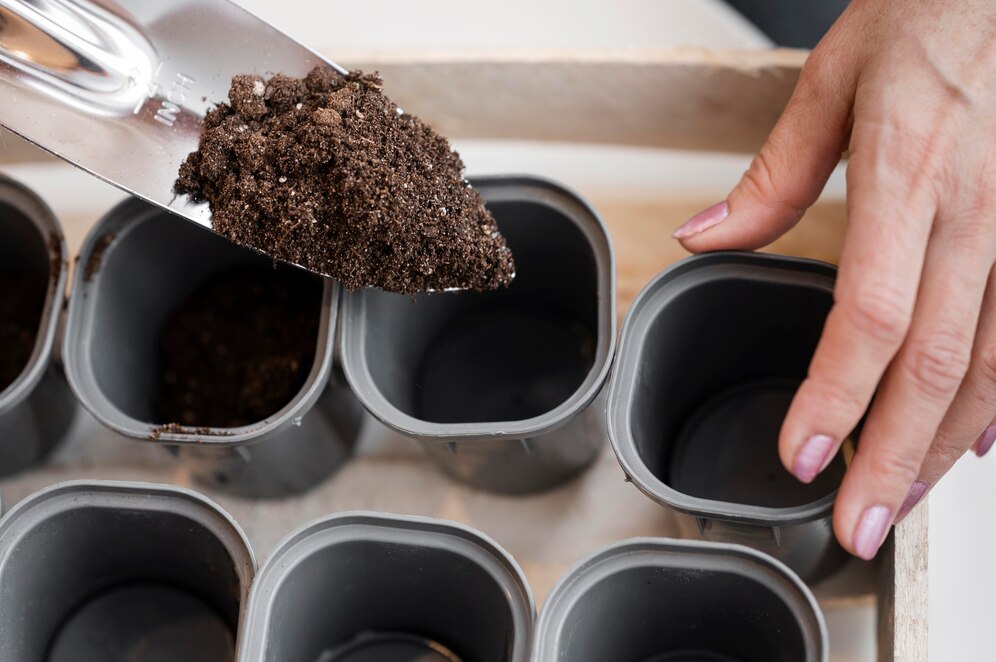
The arrival of the monsoon season can pose a significant threat to your garden’s health: soil erosion. Heavy downpours can act like a relentless force, stripping away the topsoil – the nutrient-rich foundation of a plant’s well-being.
This erosion depletes essential minerals’ soil and leaves plant roots exposed, making them vulnerable to damage and disease. Here are some effective strategies to combat soil erosion and ensure your garden thrives throughout the wet months:
Deploy a Living Barrier
Consider planting cover crops or creeping vines around your existing plants. These low-growing heroes act as a living defense system. Their dense root networks bind the soil particles together, creating a natural fortification that prevents them from being washed away by heavy runoff.
Additionally, their leaves act as a shield, absorbing the impact of raindrops and lessening their erosive force.
Mulch
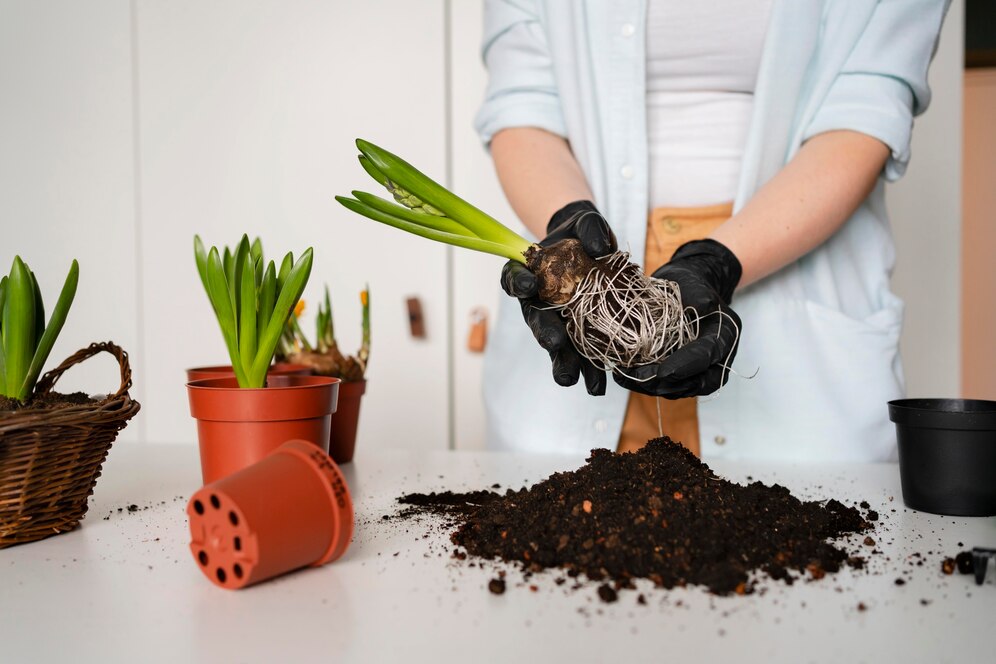
Applying a layer of organic mulch, like grass clippings, leaves, or wood chips, around your plants offers a multi-pronged attack against soil erosion. The mulch acts like a protective blanket, absorbing the initial force of the raindrops and dispersing the water flow, significantly reducing its erosive power.
Additionally, the mulch helps retain moisture in the soil, reducing the risk of waterlogging and suppresses weeds that can compete with your plants for vital resources.
Indoor Plants During Wet Weather
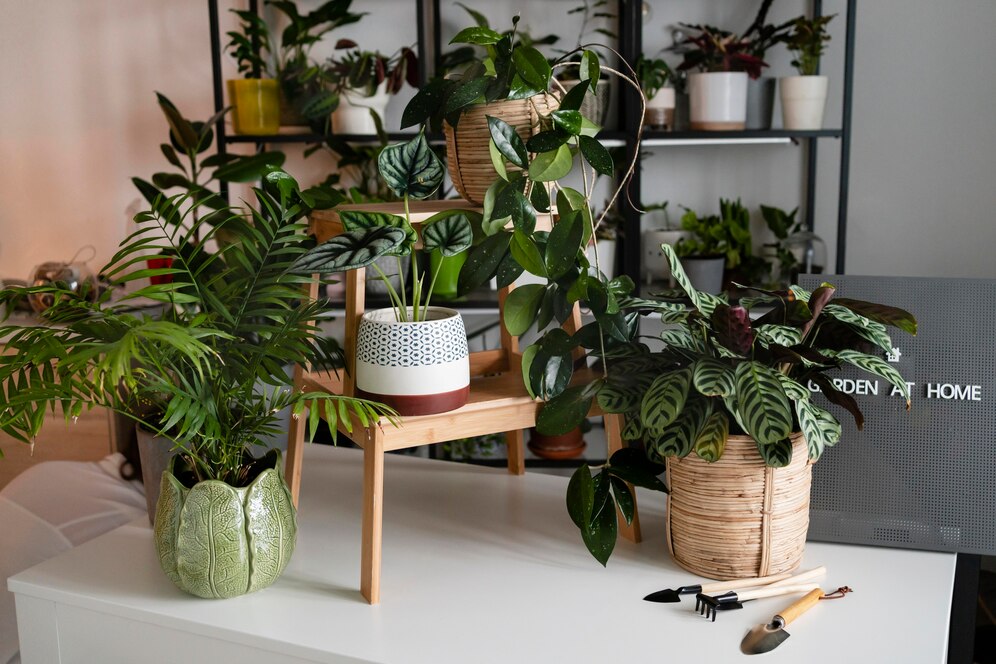
Stagnant air during this time can create a breeding ground for fungal diseases like powdery mildew or botrytis, threatening the health of your leafy companions. Here are some key strategies to ensure your indoor jungle thrives throughout the wet months:
Ensure Air Circulation
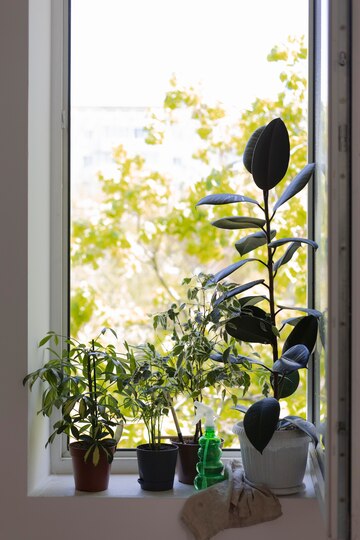
Proper air circulation is crucial for preventing fungal diseases. Whenever possible, open windows and doors to create a gentle breeze around your plants. This helps to remove moisture that lingers around leaves, reducing the risk of fungal growth.
If natural ventilation is limited, consider using a small fan on low settings to mimic a refreshing breeze. Remember to position the fan so it doesn’t directly blow on the plants, which can dry them out.
Maintain Balanced Humidity
While some plants, like ferns and orchids, revel in the increased humidity of the rainy season, excessive moisture can be detrimental to others. To maintain a balanced environment, group humidity-loving plants together to create a mini-humid microclimate.
This allows them to share the moisture they release through transpiration, creating a self-regulating system. Alternatively, you can use a humidifier cautiously, especially for delicate tropical plants.
However, be mindful of overdoing it, as this can promote root rot, a condition where fungal pathogens attack the roots due to excessive moisture. Regularly monitor the soil moisture and avoid keeping it constantly damp.
Protect Plants from Drafts
Sudden changes in temperature and cold drafts can stress your plants, making them more susceptible to disease. During the rainy season, move humidity-loving plants away from drafty windows and doors. This will help them maintain consistent temperatures and prevent them from experiencing a shock to their system.
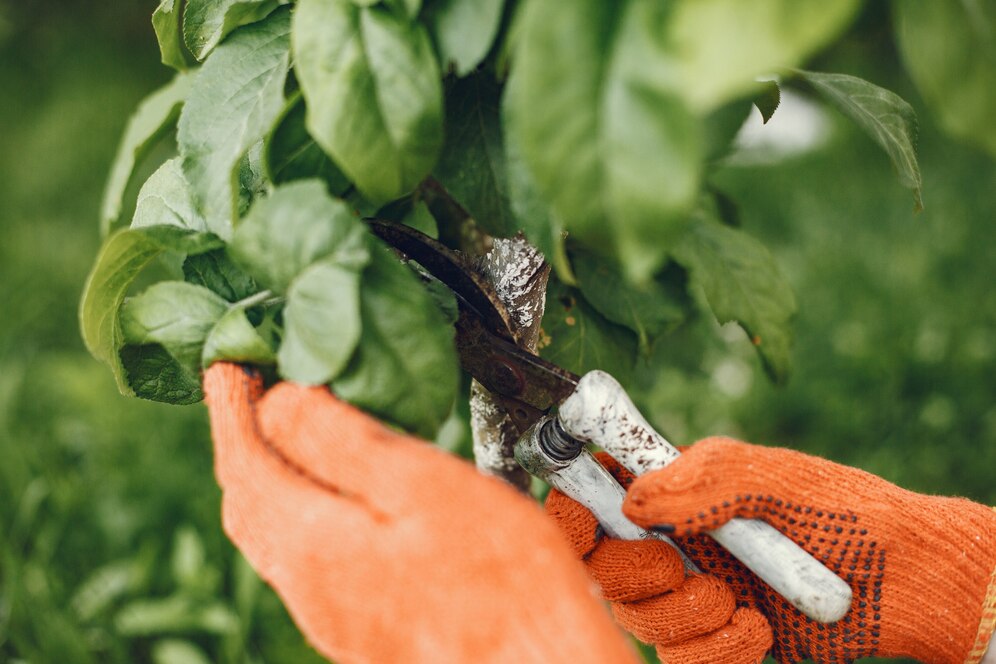
Organic Pest Control: The rainy season can also attract unwanted guests like fungus gnats and mealybugs. Thankfully, there are several organic pest control methods you can employ. For fungus gnats, which thrive in moist soil, try letting the top inch of soil dry out completely between waterings.
Additionally, you can sprinkle diatomaceous earth, a natural powder made from fossilized algae, on the soil surface to deter them.
For mealybugs, which appear as cottony white clusters on leaves and stems, you can use a neem oil solution. Mix neem oil with water according to the manufacturer’s instructions and spray directly on the pests. Repeat this process every few days until the infestation is under control.
Tips for Gardening During Rainy Season
Choosing the Right Plants for the Rainy Season
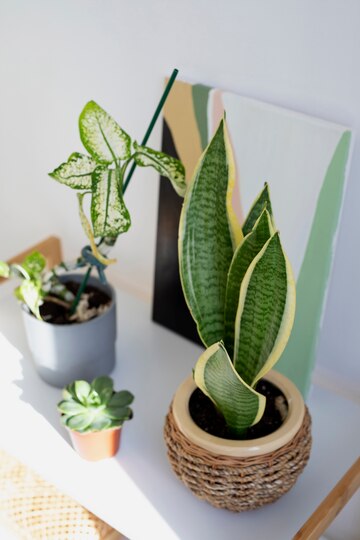
Not all plants are created equal. When selecting plants for the rainy season, opt for those that can tolerate heavy rain and moist conditions.
Flowering plants: Opt for flowering plants that are renowned for their resilience against heavy rain. Impatiens, with their vibrant blooms in shades of pink, purple, and white, are a classic choice. Hibiscus, boasting large, trumpet-shaped flowers in red, orange, or yellow, add a touch of tropical flair and tolerate downpours well.
Lastly, pentas, with their clusters of star-shaped blooms in red, pink, or purple, which attract butterflies and pollinators while shrugging off heavy rain. These champions will continue to bring a splash of color to your garden throughout the rainy season.
Potted plants: When it comes to potted plants, choose varieties that thrive in moist conditions but still require good drainage. Spider plants, with their cascading green foliage and easy-to-care-for nature, are a popular choice. Bromeliads, with their stunning, colorful flower bracts, add a touch of the exotic and prefer consistently moist soil.
Ferns, with their delicate fronds, come in a variety of shapes and sizes and love the increased humidity of the rainy season. Remember, ensure proper drainage for all potted plants to avoid root rot.
Regular Inspections
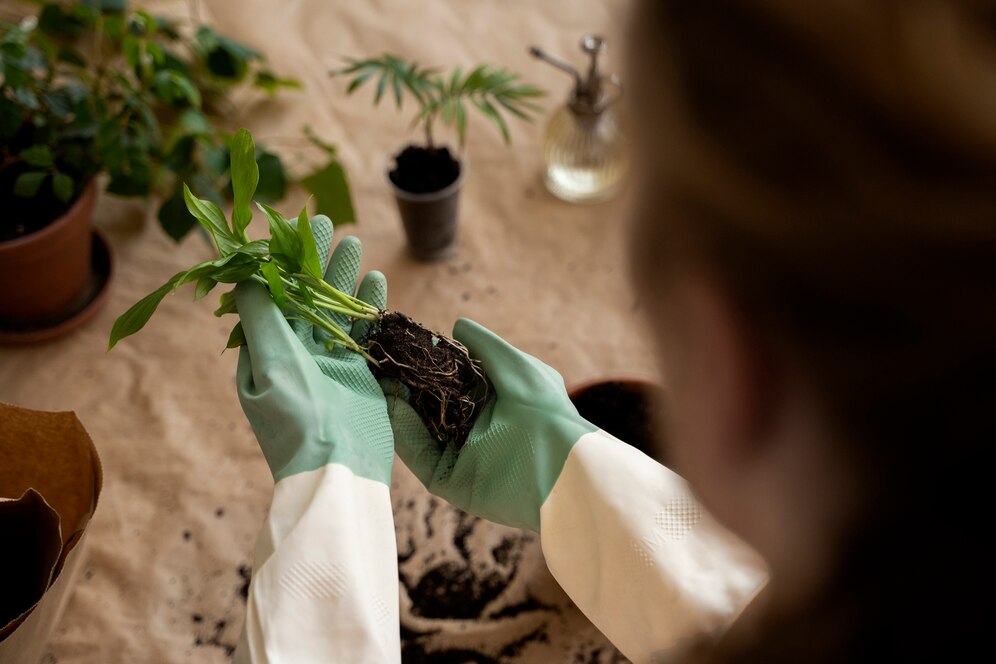
When it comes to gardening, being vigilant with your plant friends during the rainy season is crucial. Regularly check your plants for signs of stress, such as wilting leaves or stunted growth. This allows you to identify and address any potential problems like disease or pest infestation early on, preventing them from spreading and causing significant damage.
Fungal Diseases
Fungal diseases, like powdery mildew or botrytis, often flourish in the moist conditions of the rainy season. Be on the lookout for signs like white or brown powdery patches on leaves or stems. Thankfully, you can combat these fungal foes with organic fungicides. Neem oil, a natural product derived from the neem tree, is a safe and effective option.
Mix neem oil with water according to the manufacturer’s instructions and spray directly on the affected areas. Sulfur-based fungicides are another option, but be sure to follow label instructions carefully, as they can be slightly harsher on some plants.
Creating a Rainy Season Garden Plan
When designing your garden for the rainy season, a little planning goes a long way. Consider incorporating slopes or channels in your garden beds to direct excess rainwater away from plant roots. This will prevent waterlogging, which can suffocate roots and lead to rot.
Additionally, explore installing a rainwater harvesting system. This allows you to collect and store the abundant rainwater during the wet months, providing a free and eco-friendly source of irrigation for your plants during drier periods.
These tips can help in providing a little extra care and attention during the rainy season, you can ensure your plants continue to bring you joy and beauty throughout the year. Remember, a thriving garden is possible even during the wettest months.

Celebrate Life’s Milestones in Camella!
Make unforgettable memories in a Camella home.
Our communities are designed to elevate your living experience.


